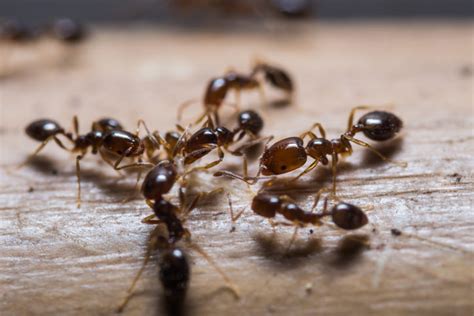How To Identify Carpenter Ants

Identifying carpenter ants can be a challenging task, especially for those who are not familiar with the different species of ants. However, it is essential to recognize these ants to prevent potential damage to your property. Carpenter ants are one of the largest ant species, and they are known for their distinctive appearance and behavior. In this article, we will discuss the characteristics of carpenter ants, how to identify them, and what to do if you suspect an infestation.
Characteristics of Carpenter Ants

Carpenter ants belong to the genus Camponotus and are found throughout the world. They are typically black or reddish-black in color, although some species may have a yellowish or brownish tint. These ants are large, with workers ranging from 1⁄4 to 1⁄2 inch in length, and queens can be up to 1 inch long. Carpenter ants have a distinctive rounded abdomen and a narrow waist. They also have large mandibles and a distinctive node on their pedicel, which is the narrow waist that connects the abdomen to the thorax.
Body Structure and Coloration
The body structure of carpenter ants is divided into three main sections: the head, thorax, and abdomen. The head is equipped with large compound eyes and mandibles, which are used for eating and defense. The thorax is the middle segment, and it has six legs attached to it. The abdomen is the largest segment, and it contains the digestive organs and the reproductive organs. Carpenter ants have a shiny exoskeleton, which can range in color from black to reddish-black. Some species may have a yellowish or brownish tint, but this is less common.
| Characteristics | Description |
|---|---|
| Body Length | 1/4 to 1/2 inch (workers), up to 1 inch (queens) |
| Body Color | Black or reddish-black, with possible yellowish or brownish tint |
| Abdomen | Rounded, with a narrow waist (pedicel) |
| Mandibles | Large, used for eating and defense |

Key Points
- Carpenter ants are large, with workers ranging from 1/4 to 1/2 inch in length
- They have a distinctive rounded abdomen and a narrow waist
- Carpenter ants have large mandibles and a distinctive node on their pedicel
- They are typically black or reddish-black in color, although some species may have a yellowish or brownish tint
- Carpenter ants are known for their ability to excavate wood and create tunnels and galleries
How to Identify Carpenter Ants

Identifying carpenter ants requires a combination of visual observation and knowledge of their behavior. Here are some steps to help you identify carpenter ants:
Visual Inspection
Start by visually inspecting the area where you suspect an infestation. Look for ants that are large and black or reddish-black in color. Check for the presence of a rounded abdomen and a narrow waist. Also, look for ants with large mandibles and a distinctive node on their pedicel.
Behavioral Observation
Carpenter ants are known for their ability to excavate wood and create tunnels and galleries. Look for signs of wood damage, such as small holes or tunnels in the wood. You may also see sawdust or wood shavings near the affected area. Carpenter ants are also attracted to moisture, so look for areas with high humidity or water damage.
What to Do If You Suspect an Infestation
If you suspect a carpenter ant infestation, it’s essential to take action quickly to prevent further damage. Here are some steps to follow:
Call a Pest Control Professional
Carpenter ant infestations can be challenging to treat, and it’s often best to call a pest control professional. They will be able to assess the situation and provide a treatment plan to eliminate the infestation.
Seal All Entry Points
Carpenter ants can enter your home through even the smallest cracks and crevices. Seal all entry points, including holes around windows and doors, and gaps in the foundation or walls.
Eliminate Moisture
Carpenter ants are attracted to moisture, so it’s essential to eliminate any sources of moisture in your home. Fix any leaks, and ensure that your home is well-ventilated to reduce humidity.
What do carpenter ants look like?
+Carpenter ants are large, black or reddish-black ants with a rounded abdomen and a narrow waist. They have large mandibles and a distinctive node on their pedicel.
How do I know if I have a carpenter ant infestation?
+Look for signs of wood damage, such as small holes or tunnels in the wood. You may also see sawdust or wood shavings near the affected area. Carpenter ants are also attracted to moisture, so look for areas with high humidity or water damage.
How do I get rid of carpenter ants?
+Call a pest control professional to assess the situation and provide a treatment plan to eliminate the infestation. Seal all entry points, eliminate moisture, and consider using bait stations or sprays to control the infestation.
In conclusion, identifying carpenter ants requires a combination of visual observation and knowledge of their behavior. By following the steps outlined in this article, you can determine if you have a carpenter ant infestation and take action to prevent further damage. Remember to call a pest control professional if you suspect an infestation, and take steps to seal all entry points and eliminate moisture to prevent future infestations.